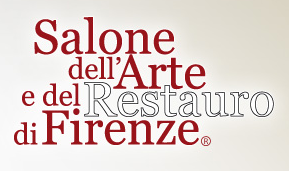Saturday, November 10, 2012 hours 10:00
Mathematics and cultural heritage: models and algorithms to serve the chain of creativity
 Fondazione per la Ricerca e l'Innovazione – POLIS in collaboration with the SIMAI – Società Italiana di Matematica Applicata e Industriale Fondazione per la Ricerca e l'Innovazione – POLIS in collaboration with the SIMAI – Società Italiana di Matematica Applicata e Industriale
Saturday, 10 November from 10 a.m. to 1 p.m. - Sala Tintori
Mathematics and cultural heritage is a combination that sinks its raison d'être since ancient times. Not only for the pursuit of harmony and proportion, mathematics has been for centuries a theoretical basis and, before that, an experiential basis for design, conservation and management of artistic and cultural heritage. If the history of mathematics is full of interconnections with art, philosophy, and, in general, with the human mind and all its manifestations and specific details, just as interesting and rich is the interconnection, in modern times, the interconnection between basic mathematics and the chain of cultural heritage.
Starting from some clear applications, related to diagnostic systems (inverse modelling, data analysis, measurement systems, etc…) the construction and the analysis of images (visual computing, image reconstruction, rendering etc...), we can easily affirm that the algorithms and the numerical solvers are at the base of all the technologies applied to cultural heritage (and not only). More recently, the development of the planning systems of interventions and evaluation of the obtained results, needs to predict the evolution of the complex systems arising from the interaction between artistic and cultural heritage and the external environment, has opened another immense scope for math, in the dynamic modelling and prediction of processes and phenomena of interaction that can lead to the degradation of an artwork or, conversely, to the evaluation of the optimal parameters for its proper management, in terms of conservation, but also in terms of use of the artefact (lighting, colorimetry etc…).
Hence that mathematics grows by the advanced technology areas such as that one of the development of diagnostic tools and imaging software, to the restoration sites, where, as always, the know-how and the skill of the operator, driving much of materials, technologies, and development of processes and applications.
If, on the one hand, mathematics, onboard integrated technologies and innovative, or through the ability of mathematicians to work in interdisciplinary teams, providing bases and quantitative methods of analysis and investigation of innovative, creeps in the chain of creativity, knowledge, to the use, through conservation and restoration, on the other hand, cuts and capacity reductions in culture in general, could burden or restrict this capacity for development and application of mathematics, because very often mathematics is hidden behind complex technologies, limiting, in fact, the potential of a sector that could represent a new force for development for our country and for our region.
The conference, with no presumption of completeness, will try to give an overview of some possible fields of application of mathematics among some of its main components, such as images, dynamic modelling and diagnostic. The main goal is to bring out the contribution of mathematics and mathematicians to a science and a technique that seems far away from the development of basic sciences such as mathematics, but that instead in all its phases preserves the signs of an ancient bond and deep, which connects the arts, thought and mathematical formalization.
Co-ordinator: Alessandro Speranza
Speakers: Marco Bellandi, Nicola Bellomo, Antonio Fasano, Roberto Natalini, Elisabetta Giani, Enrico Gobbetti
web site |